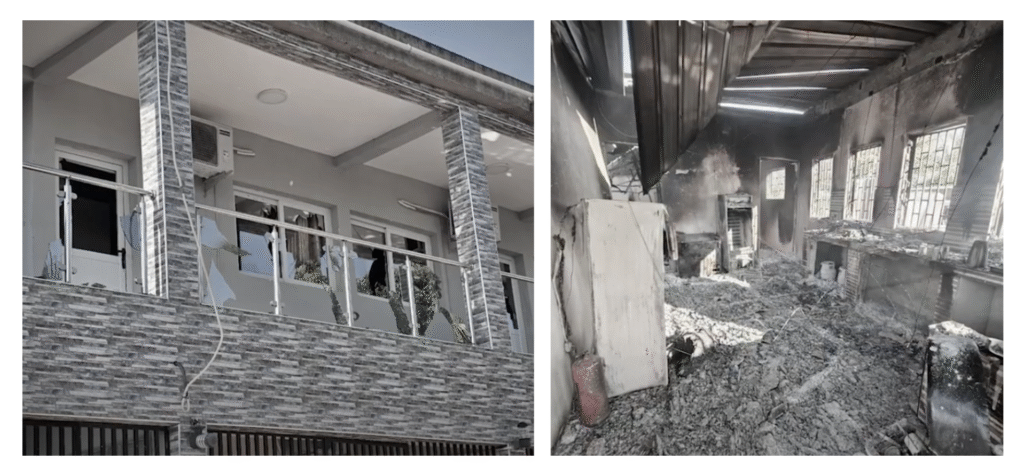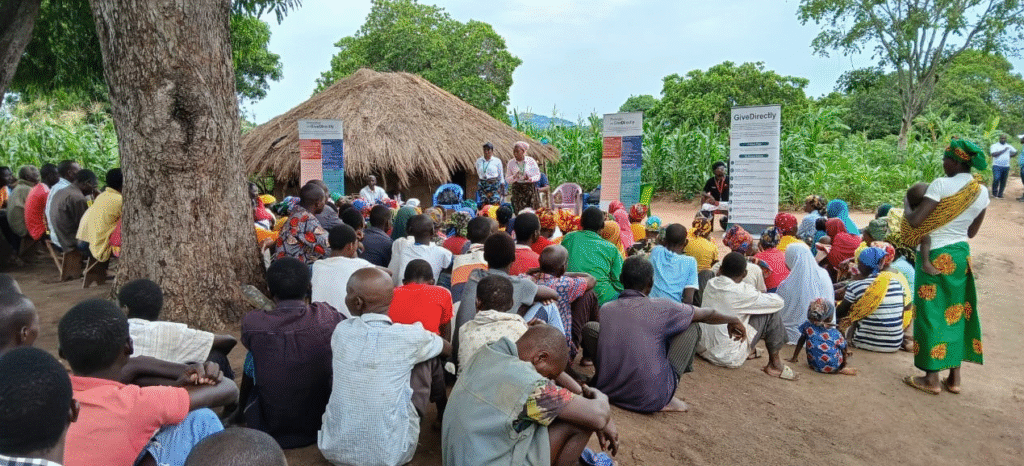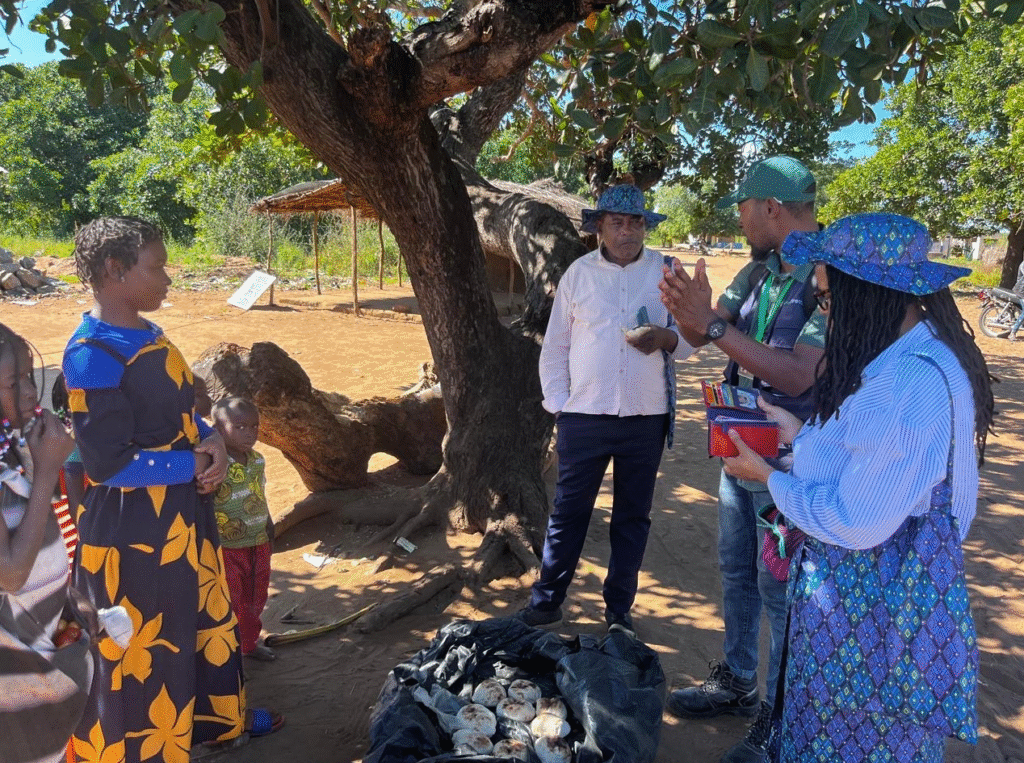Summary
🚨 In late 2024, misinformation spread online accusing GiveDirectly of being part of a political plot in Mozambique, forcing us to suspend activities and evacuate staff.
🕳️ The crisis revealed a major blind spot: our strategy of staying low-profile had created an information vacuum that bad actors could exploit.
👐 We recovered by proactively opening up to journalists, government leaders, and the public — building greater understanding and stronger support.
In the midst of post-election protests in November 2024, our cash program in Mogovolas, Mozambique was hit by a wave of false accusations.
A social media post claimed that GiveDirectly was placing recipients under house arrest, acting as a political agent of the ruling party, and even recruiting for armed groups. The lies spread quickly, amplified by political figures on livestreams and Facebook groups.
“People are talking a lot, and it’s confusing our heads. They’re saying the money we received is from Al-Shabaab, that we’ll be beheaded, that they’re going to cut our throats. We’re all very worried, please tell me the truth.” — Recipient calling GiveDirectly hotline, December 2024
Within a day, our office address was circulating publicly and our staff were no longer secure. We paused operations and evacuated the team to safety.

A low-profile had left us vulnerable to misinformation
This crisis didn’t come out of nowhere. Since launching in Mozambique in 2021, we had intentionally kept a low profile. The idea was to focus on building partnerships with local communities and government, while avoiding national attention that could draw fraud attempts or politicization, part of a broader risk-mitigation strategy.
Early on this strategy worked, but when we expanded our poverty relief program to Mogovolas in Nampula province — a more sensitive area near an ongoing conflict — it created confusion. The community didn’t know yet who we were or why we were giving out cash. Into that vacuum came dangerous stories.
We countered lies with facts, elevating the voices of recipients
With support from our partners we responded quickly. The U.S. Embassy issued a press release clarifying that the USAID-funded project was based on humanitarian principles and politically neutral. We invited national television to Mogovolas to meet recipients and hear their testimony that the project was transforming lives.
Our relationship with the government also proved vital. Officials who had seen our work up close stood behind us publicly and provided invaluable support to reestablish our credibility. Over the following weeks, the news cycle moved on. But trust had been shaken. Some community members wanted to exit the program out of fear:
“I still have your money. I didn’t use it. I’m afraid because they say later you will come back to take us away” — Recipient in Mogovolas, January 2025
We then rebuilt trust through openness and listening
When the political situation stabilized in early 2025, we launched a coordinated effort to reintroduce ourselves — this time proactively and in the open.
At the local level, we expanded community engagement. We hosted community meetings featuring Q&As and cultural performances, and spoke with youth groups, religious leaders, and traditional authorities. We organized call-in shows on local radio to explain GiveDirectly’s model and had recipients share their stories. We set up village committees that meet regularly with our staff to discuss issues and rumors relating to the program.

At the national level, we opened our doors wide. Journalists from television, radio, and newspapers visited our program and reported how the cash program was transforming communities. We produced short videos to be shared by influencers on social media and spread accurate information. Crucially, we deepened ties with the government — not just local officials, but senior civil servants at the central level. When the Permanent Secretary of the Ministry of Work, Gender and Social Action (MTGAS) visited our program and endorsed our work, it sent a powerful message.

We’re now stronger than before the crisis. The impact of this shift has been clear. The program has restarted and, despite recent USAID cuts, is now enrolling recipients at a higher rate than ever before. Community acceptance is higher. Government engagement is deeper. We’re now working with national leaders to explore ways to expand digital cash transfers across the social protection system.
Importantly, we’re no longer hoping to stay invisible. We’re showing our work and trusting that transparency is the best protection we can offer.
There are lessons for all all aid groups
This experience has important implications for all aid groups, especially for organizations working in politically sensitive contexts:
- 🤐 A low-profile can backfire. If no one knows about your work, they’ll believe the first lie they hear about it. Don’t just put out positive PR; proactively ‘pre-bunk’ common misconceptions.
- 🤝 Strong relationships with allies aren’t enough. Local government support helped us recover, but it couldn’t stop misinformation from spreading in the first place. Trust must be layered: local, national, and public.
- 👐 Openness builds resilience. By creating multiple channels to explain who we are and answer questions, we’ve made our program harder to mischaracterize and easier to defend.
- 🗣️ Recipients are the most credible messengers. Their testimonies to the media did more to restore trust than any statement from our staff could have.
In a time when misinformation can spread faster than any field team can respond, humanitarian actors must be ready. That means building public understanding before a crisis hits, not after.
Because when we don’t tell our story, someone else will, and they may not get it right.
Here is a video about our experience written and edited by our Mozambique team:
Written by Miguel Jambo, edited by Nicke Mario